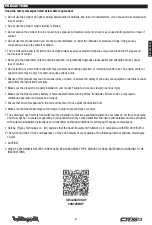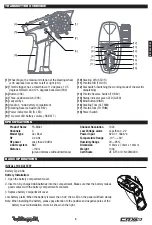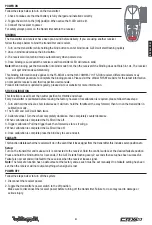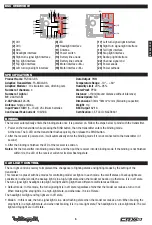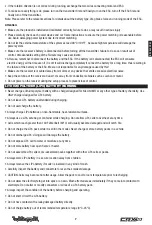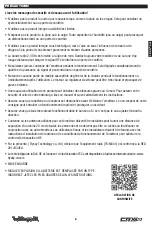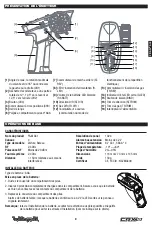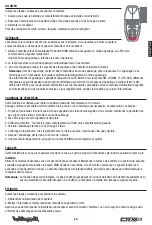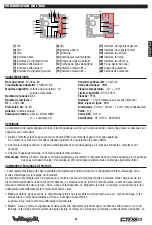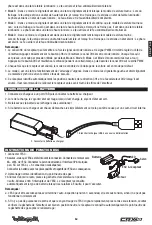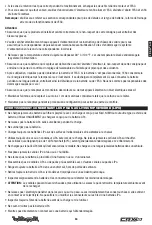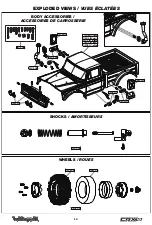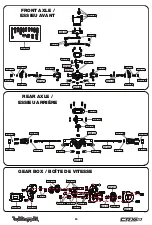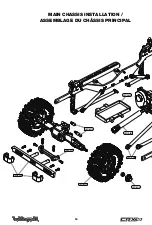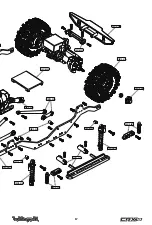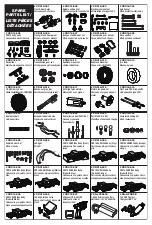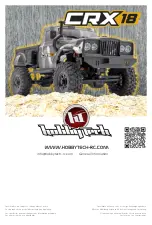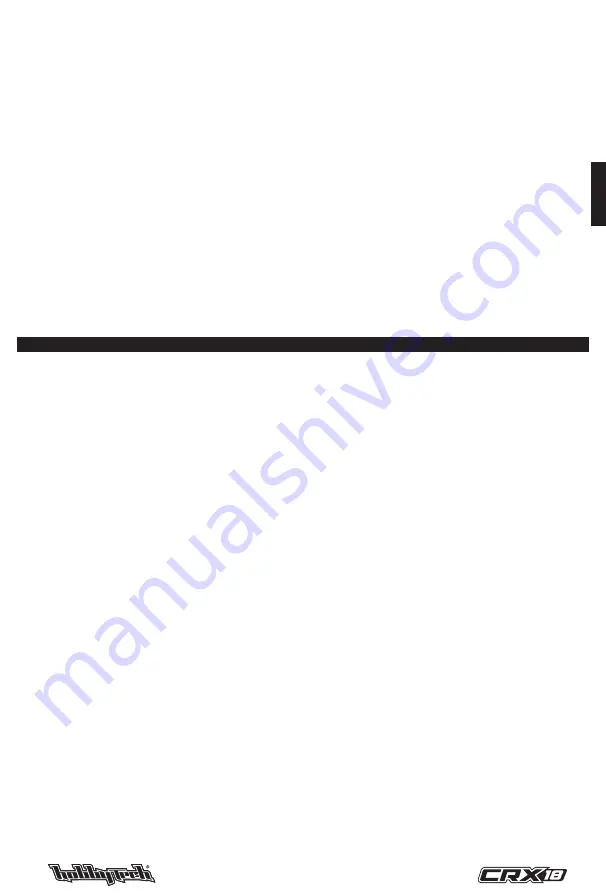
6
7
c. If the rotation direction is not correct during running, exchange the two wires connecting motor and ESC.
d. To make sure everything is ok, please turn on the transmitter first and finally turn on the ESC, turn off the ESC first and
finally turn off the transmitter.
Note: Please refer to the relevant sections for details about the battery type, drag brake force and running mode of the ESC.
Attention:
• Make sure the product is installed and calibrated correctly, failure to do so may result in serious injury.
• Please carefully check each power device and car frame instructions to ensure the power matching is reasonable before
use. Avoid damaging power system due to incorrect matching.
• Do not let the external temperature of the system exceed 90°C /194°F , because high temperature will damage the
power system.
• Make sure the receiver’s battery is disconnected before turning off the transmitter, failure to do so can result out of
control. Unreasonable setting of the Failsafe may cause accidents.
• After use, remember to disconnect the battery and the ESC. If the battery isn’t disconnected, the ESC will consume
electric energy all the time even if it is off. It will discharge completely if connect the battery for a long time, thus resulting in
the failure of the battery or the ESC. We are not responsible for any damage caused by this!
• Make sure the receiver is mounted away from motors or any device that emits excessive electrical noise.
• Keep the antenna of the receiver at least 1cm away from conductive materials such as carbon or metal.
• Do not power on the receiver during the setup process to prevent loss of control.
LITHIUM POLYMER (LIPO) BATTERY WARNING
• Never charge a lithium polymer battery with a charger designed for Nicd, NIMH, or any other type of battery chemistry. Use
ONLY charger designed for LiPo battery.
• Do not leave LiPo battery unattended during charging.
• Do not overcharge the battery.
• Always charge LiPo batteries on non-flammable, heat-resistant surfaces.
• Always use a LiPo-safe bag or container while charging. Do not allow LiPo cells to overheat at any time.
• Cells which reach greater than 140 Fahrenheit (60°C) will usually become damaged and will catch fire.
• Do not charge the LiPo pack while it is still in the model. Never charge or store battery packs in a vehicle.
• Do not discharge LiPo; doing so will damage the battery.
• Do not expose LiPo cell to water or moisture at any time.
• Do not store battery near open flame or heater.
• Do not assemble LiPo cells or pre-assembled packs together with other LiPo cells or packs.
• Always store LiPo battery in a secure location away from children.
• Always remove the LiPo battery if model is involved in any kind of crash.
• Carefully inspect the battery and connectors for even the smallest damage.
• CAUTION: Cells may become hot after usage. Allow the pack to cool to room temperature prior to recharging.
• Do not allow the electrolyte to get into eyes or on skin. Wash affected areas immediately if they come into contact with
electrolyte. Do not alter or modify connectors or wires of a LiPo battery pack.
• Always inspect the condition of the battery before charging and operating.
• Do not short circuit the LiPo battery.
• Do not have contact with a leaky/damaged battery directly.
• Do not charge battery out of recommended temperature range (0°C-45°C).
E
NGLIS
H
F
RA
N
Ç
AI
S
Summary of Contents for 1.CRX18-BL
Page 19: ...NOTES ...


